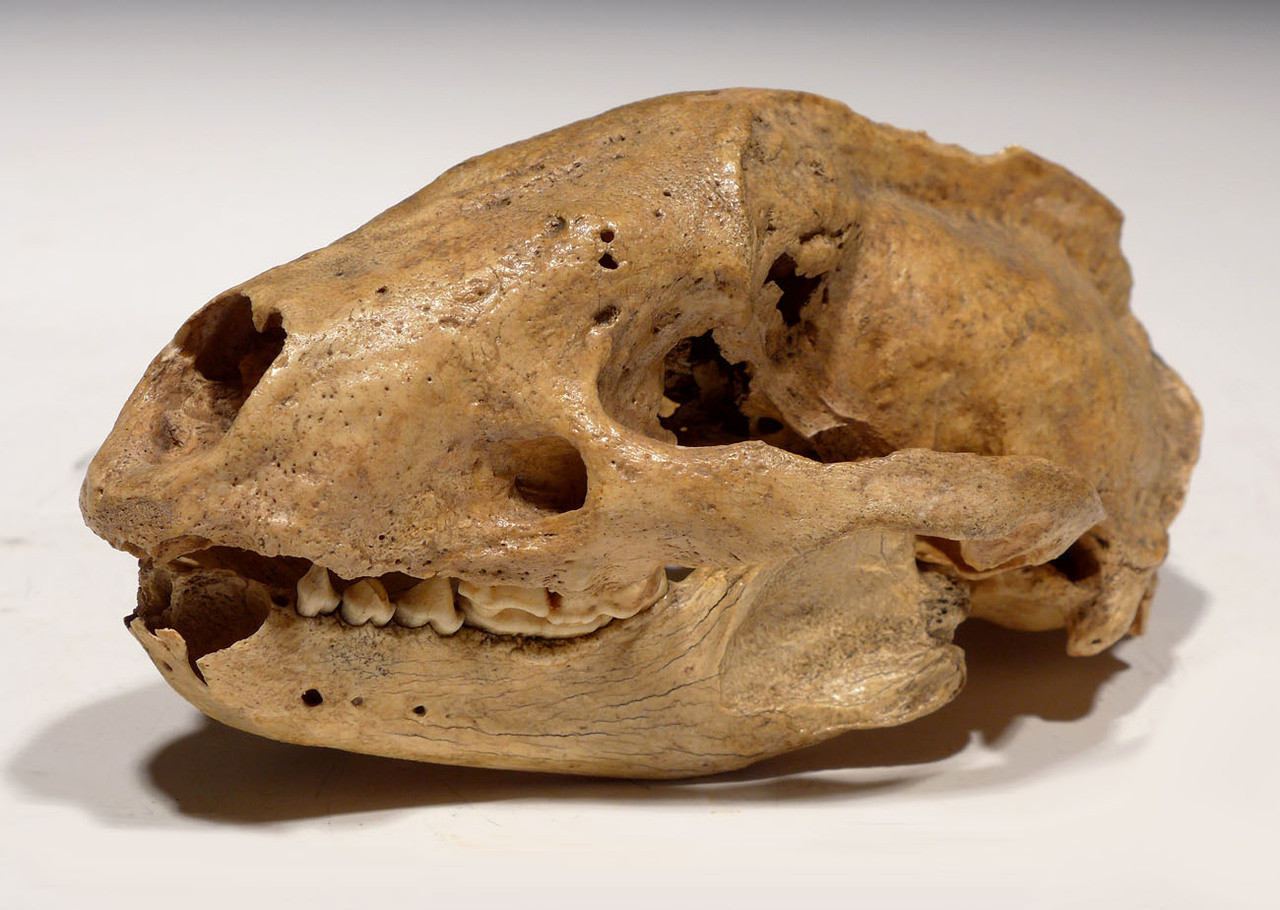Product Description
ID
|
Meles sp.
|
||
FOUND
|
Cave Deposit - Ardennes Forest, Belgium
|
||
AGE
|
PLEISTOCENE: 150,000 - 50,000 years ago
|
||
SIZE
|
5.5" long
|
||
CONDITION
|
COMPLETE WITH ORIGINAL MANDIBLE
|
||
NOTE
|
EXTREMELY RARE SPECIMEN FOUND
|
||
Actual Item - One Only
|
|||
CLICK HERE TO LEARN MORE ABOUT WILD BOARS
This is a very rare opportunity to acquire the only specimen of this kind we have encountered. This is a complete Ice Age fossil Badger skull from a liftime collection of a now deceased Belgian collector. This fossil was found in the same cave layer as Cave Bear and Cave Hyena remains. While Badgers are burrowing animals and it is possible for a Holocene Badger to burrow down to a fossil-bearing layer and die, this skull was not found in what would have indicated such a burial. Furthermore, it is very dark and identical in patina and color to the Cave Bear and Cave Hyena fossils it was found alongside. The mandible IS ORIGINAL TO THE SKULL but no other body remains were found with this skull. The skull is complete and the mandible is virtually complete. All the teeth are original and have not been added from other animals. Never in all our travels in Europe, have we seen a fossil skull of this animal so this is an extremely rare opportunity for a museum or highly advanced private collector to acquire an elusive animal of Europe's Final Ice Age! REPAIR TO REJOIN LEFT AND RIGHT MANDIBLES ONLY. MANDIBLE ORIGINAL TO SKULL. NO OTHER REPAIR AND NO FABRICATION OR RESTORATION.
The European badger (Meles meles) also known as the Eurasian badger, is a species of badger in the family Mustelidae and is native to almost all of Europe and some parts of West Asia. Several subspecies are recognised; the nominate subspecies (Meles meles meles) predominates over most of Europe. The species likely evolved from the Chinese Meles thorali of the early Pleistocene. The modern species originated during the early Middle Pleistocene, with fossil sites occurring in Episcopia, Grombasek, Süssenborn, Hundsheim, Erpfingen, Koneprusy, Mosbach 2, and Stránská Skála. A comparison between fossil and living specimens shows a marked progressive adaptation to omnivory, namely in the increase in the molars' surface areas and the modification of the carnassials.
 US DOLLAR
US DOLLAR
 EURO
EURO
 AUSTRALIAN DOLLAR
AUSTRALIAN DOLLAR
 CANADIAN DOLLAR
CANADIAN DOLLAR
 POUND STERLING
POUND STERLING
































